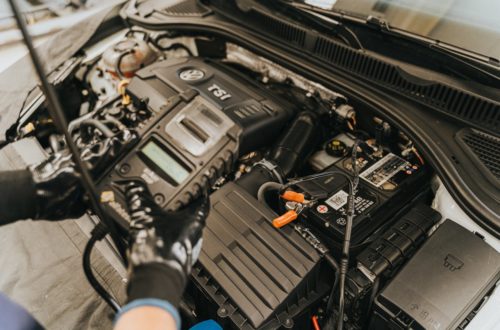Top Maintenance Tips for High-Performance Cars

When you’ve invested in a high-performance vehicle, you want every drive to deliver the exhilarating experience you paid for. These top maintenance tips for high-performance cars go beyond your standard oil changes and tire rotations. Performance vehicles demand specialized attention to maintain their edge, and neglecting these pertinent areas can turn your dream machine into an expensive problem down the line. Understanding your vehicle’s unique needs will help you preserve the thrill and the value of your investment.
Engine Oil: The Lifeblood of Performance
Your high-performance engine generates way more heat and operates at higher RPMs than standard engines. This means your oil works harder and breaks down faster, which makes synthetic oil essential because it has superior heat resistance and flow.
Regular oil changes are also crucial in keeping your vehicle in top shape. While manufacturers might suggest 7,500-mile intervals, many performance car enthusiasts change their oil every 3,000 to 5,000 miles.
Cooling System Vigilance
Performance engines run hot, making your cooling system work overtime. Regular coolant flushes become vital, but the type of coolant matters just as much as the frequency. Many performance cars require specific coolant formulations that can handle higher operating temperatures and pressures.
Check your radiator and cooling fans regularly, as performance driving puts extra strain on these components, and a failing cooling system can cause engine damage in minutes.
Turbocharger Care Essentials
If your performance car features forced induction, turbocharger maintenance becomes another specialized concern. These precision components spin at incredible speeds and operate under extreme conditions. Learning how to identify early signs of turbocharger failure, such as unusual whistling sounds or excessive exhaust smoke, can prevent the component from completely failing, which can lead to expensive repairs.
Always allow your engine to idle for a minute or two after driving to let the turbocharger cool down gradually, which can lessen the wear and tear on the turbo.
Brake System Excellence
Performance cars stop as hard as they accelerate, which is why high-performance brake pads and rotors wear differently than standard components and often require more frequent inspection and replacement.
Performance brake fluid also deserves attention. The DOT 4 or DOT 5.1 brake fluid in performance cars has a higher boiling point than standard DOT 3 fluid, but it also absorbs moisture more readily. Annual brake fluid changes will maintain a consistent pedal feel and prevent brake fade, a potentially dangerous condition that occurs during aggressive driving.
Owning a high-performance car means embracing a different approach to vehicle maintenance. These top maintenance tips for high-performance cars keep your vehicle in top shape and ensure its reliability, performance, and resale value.
Remember that performance car maintenance is about preserving the driving experience that made you choose a performance car in the first place.
Would you like to receive similar articles by email?





